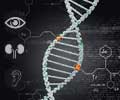A new free online tool helps researchers utilize complex data from sophisticated studies involving hearing function to promotes new discoveries to reverse hearing loss.

It is operated by a group of physician-scientists at the UMSOM Institute for Genome Sciences (IGS) in collaboration with their colleagues at other institutions.
The portal allows researchers to rapidly access the data and provides an easy interpretation of datasets. Scientists can also input their data and compare it to other datasets that help to determine the significance of their new finding.
“It saves scientists a huge amount of time. Instead of relying only on identifying mutations in genes for hearing loss, researchers can easily identify which cells express any gene in the ear, and how this expression changes, for example, as a result of noise exposure or in processes of regeneration in other species” said study corresponding author Ronna Hertzano, MD, PhD, Associate Professor of Otorhinolaryngology-Head & Neck Surgery at UMSOM and founder of the gEAR.
Researchers recently added data from the BRAIN initiative to a specialized domain of the gEAR portal to provide access to those performing neuroscience studies for a better understanding of brain function and neurodegenerative diseases like Alzheimer's.
The portal is free and available to any researcher seeking access. Users of the portal can do a variety of applications depending on their needs.
Advertisement
Once a manuscript is published, a permalink can be included in the manuscript which links readers directly to a curated view of that dataset.
Advertisement
This portal not only access allows access to data in large repositories, it also curates and organizes the data into an accessible format so it can be used to address important scientific questions.
The gEAR portal is a beautiful example of the value of close collaboration of clinicians, biologists, and engineers to bridge the gap in technology.
Source-Medindia















